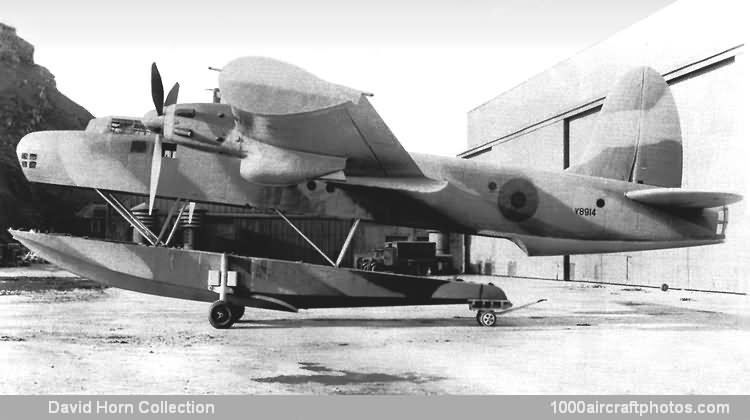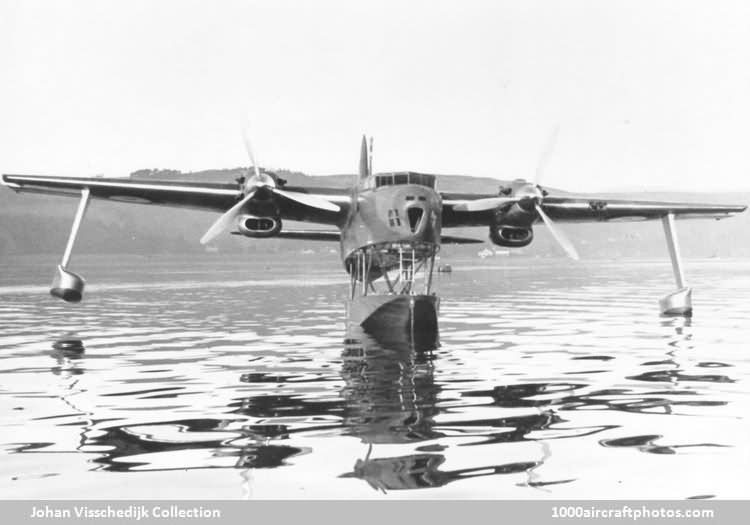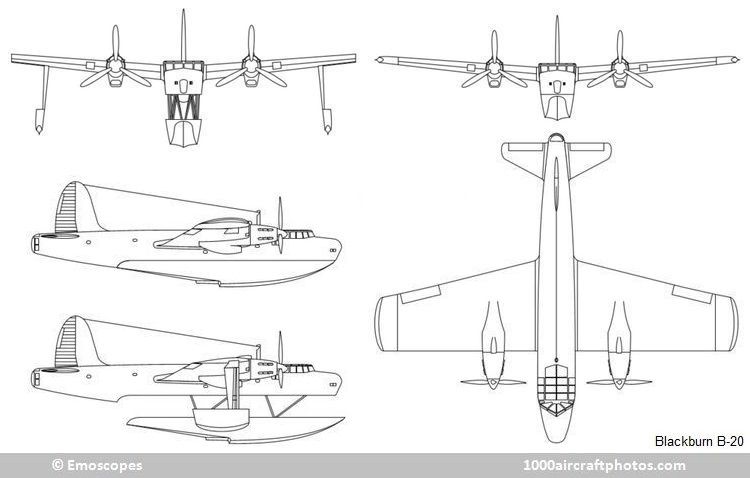03/31/2013. Remarks by Johan Visschedijk: "The idea of a flying boat equipped with a retractable planing bottom had first been projected before WW II as a means of providing water clearance for large propellers, and of attaining a large angle of incidence for take off without the penalty of high drag in flight. Blackburn's designer, Major Rennie, first proposed the construction of a small retractable-hull fighter, but this was officially opposed, so Rennie began to design a larger machine on the same basis to meet the requirements of Specification R.l/36, to which the Saunders-Roe Lerwick was also designed.
The B-20 was a medium-size, general purpose, high-wing cantilever monoplane of all-metal construction, representing the culmination of several years research work by Major Rennie. The power units were two 1,720 hp Rolls-Royce Vulture 24-cylinder, liquid-cooled X-engines, driving three-bladed de Havilland Hydromatic propellers. The choice of these engines, dictated by their high power output, was to prove unfortunate, for they were far from cleared of 'teething trouble', as was demonstrated in the Avro Manchester installation.
The B-20 planing bottom, or pontoon, divided into five watertight compartments with the center cell as a fuel tank, was attached to the main hull by links, and when hydraulically retracted fitted snugly to the upper hull, the whole forming a good streamline profile. The crew positions consisted of a bomb-aimer's position in the nose, a large cabin providing accommodation for first and second pilots, navigator, wireless operator and flight engineer. Aft of the cabin was a galley and engineer's bench, a toilet, and a rest position furnished with a bunk.
All marine equipment not stowed in the hull, such as the anchor and winch, boat hook, mooring pennant and drogue, was stowed on the pontoon deck or on the lower side of the upper hull, with mooring operations conducted from the pontoon deck, as was crew access. To provide adequate stability on the water with the high-wing layout, the wing tip float struts had to be of some length and to reduce drag to a minimum they were hydraulically retractable to form wing tip end plates, as on the Consolidated Catalina.
The B-20 was not fitted with defensive armament, due to its experimental role, but provision was made in the design for the mounting of dorsal and tail power-driven gun turrets, and four bomb cells were built into the mainplane center section, two on either side of the hull, the bomb cell doors retracting into the mainplane during bomb release.


